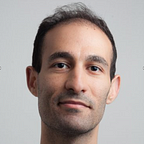Negativity Bias: Why Your Brain Loves the Dark Side
The science behind our obsession with all things infuriating, saddening, and terrifying
A psychotherapist recently asked me a question that stuck in my mind: “Unhappy thoughts ruin a good mood all the time, so in the same way, why can’t you fix a bad mood by thinking of happy thoughts?”
When you’re happy or proud of something, it’s easy to put a stop to it by thinking of an anxiety or irritation. But when you’re sad or anxious, “thinking happy thoughts” just seems fake and futile. Why this asymmetry?
Negativity is magnetic
Human psychology is filled with cognitive biases, and one prominent example is the negativity bias. Negative emotional information commands our attention more than positive emotional information does. As psychologists Rozin & Royzman put it in their 2001 paper: “Brief contact with a cockroach will usually render a delicious meal inedible. The inverse phenomenon — rendering a pile of cockroaches on a platter edible by contact with one’s favorite food — is unheard of.”
Emotions like anger, fear, and disgust signal a threat. They drive immediate action by stimulating fight-or-flight responses, in contrast to positive emotions like happiness which lack a sense of…
